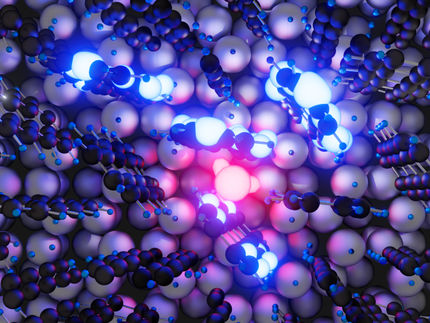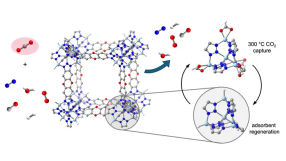Bio-based solar cell
Photosynthetic proteins generate electricity rather than biomass
Researchers at the Ruhr-Universität Bochum (RUB) have developed a bio-based solar cell. They embedded the two proteins photosystem 1 and 2, which in plants are responsible of photosynthesis, into complex molecules developed in-house, thus creating an efficient electron current. Headed by Prof Dr Wolfgang Schuhmann from the Department of Analytical Chemistry and Center for Electrochemical Sciences (CES) and Prof Dr Matthias Rögner from the Department of Plant Biochemistry, the team has published a report in the journal "Angewandte Chemie".
Isolating and embedding photosystems
In leaves, the photosystems 1 and 2 utilise light energy very efficiently; this is required for converting carbon dioxide into oxygen and biomass. The Bochum researchers' bio-based solar cell, on the other hand, generates electricity rather than biomass. Prof Rögner's team isolated the two photosystems from thermophilic cyanobacteria that live in a hot spring in Japan. Because of their habitat and behaviour, their photosystems are much more stable than comparable proteins of species that do not occur under extreme environmental conditions. Prof Schuhmann's team developed complex electron-conducting materials, so-called redox hydrogels. The researchers embedded the photosystems into these hydrogels in order to connect them to the electrodes of the photovoltaic cells.
Structure of the bio-based solar cell
The cell is made up of two chambers. In the first chamber, the protein photosystem 2 extracts electrons from water molecules, thus generating oxygen. The electrons migrate through the redox hydrogel to the electrode in the first chamber which is connected to the electrode in the second chamber. The electrode in the second chamber conducts the electrons via a different redox hydrogel onto photosystem 1. There, electrons are passed to oxygen; water is generated. However, the photosystems carry out these processes only if they are powered by light energy. Thus, if exposed to light, there is a continuous electricity flow within the closed system.
Efficiency may be increased
In order to convert solar into electric energy, there must be a potential difference between the two electrodes. The Bochum researchers have established this difference by deploying redox hydrogels with different potentials. The potential difference determines the bio photovoltaic cell's voltage and, consequently, its efficiency. Currently, the bio-based solar cell boasts an efficiency of several nanowatts per square centimetre. "The system may be considered a blue print for the development of semi-artificial and natural cell systems in which photosynthesis is used for the light-driven production of secondary energy carriers such as hydrogen," says Prof Rögner.
Original publication
Other news from the department science

Get the chemical industry in your inbox
From now on, don't miss a thing: Our newsletter for the chemical industry, analytics, lab technology and process engineering brings you up to date every Tuesday and Thursday. The latest industry news, product highlights and innovations - compact and easy to understand in your inbox. Researched by us so you don't have to.




























































